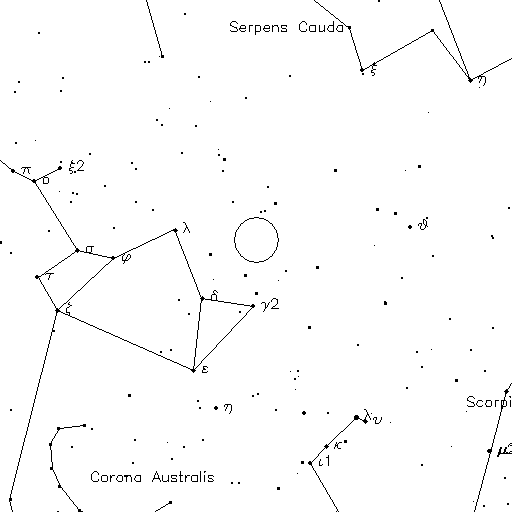In case you didn’t catch the New Nova In Sagittarius alert the other day… You might want to pay a little closer attention because it is brightening by leaps and bounds! Captured 4 days ago by our friends at Macedon Ranges Observatory and shared exclusively with UT Readers, the up-to-the-minute reports show it is now clearly a binocular object and may have even reached unaided eye visibility.
AAVSO Special Notice #106
April 25, 8:09 am EST
According to reports, Nova Sgr 2008 continues to brighten,
with the last measurements from Alexandre Amorim
indicating about V=6.5 on 20080423.0993.
Luckily, many AAVSO program stars are in Saggitarius,
and if you use a B-scale or larger field with VSP, you
will find many sequence stars from which to choose.
Keep watching this nova as it brightens; few professional
telescopes can observe this bright, while with a pair
of binoculars it is an easy target. We will be uploading
a BVRI calibration in a few days, in plenty of time
to follow the decline.
This nova’s coordinates are RA 18:05:58.90 Dec -27:13:56.3 . For those who would like to try their hand with binoculars? Aim just a couple of fingerwidths north of the tip of the “teapot” spout. It will by far be the brightest in the field. Use the included map – the circled area is the rough location and the magnitudes are set so that anything that appears brighter than what you see in the circle will be the nova.
Be sure to drop our friends at Macedon Ranges Observatory a few lines and let them know how much we all appreciate seeing this well ahead of the rest of the world’s news!


Please explain. From the text in this article the impression is that professional telescopes are not capable of observing bright objects. Does this mean that only dim, distant objects can be seen by professional telescopes? There are any number of amateur telescopes of comparable size and sensitivity of professional telescopes, so could an amateur telescope see this brightening object or would it also be blind to the nova? Please explain.
What happens is telescopes that are meant to pick up very faint objects – or stars – will wash out when faced with something very bright. While they could detect it visually, there’s little to no chance of photographing it without washing out critical background stars whose patterns we use to verify location. For certain types of telescopes, even the airy disc would blow away neighboring stars on something very bright.
No telescope would be blind to the nova – only the user with certain equipment! In this respect, it would be nearly impossible to make an accurate judgment call on exact magnitudes – one of the purposes of AAVSO.
Let me put out a call right now and see if we can get an up-to-the-minue image!
Our skies here have cleared finally, so I was hoping to take a look for this tonight with my binocs. I was getting a skymap from http://www.fourmilab.ch/cgi-bin/Yourtel and noticed that the moon crossed the space at about noon UTC today. At 80+% full, it might wash out the observation, but it’s definitely a helpful signpost for finding the nova.